The vernal equinox marks the moment the sun crosses the celestial equator – the imaginary line in the sky above the Earth’s equator – from the southern to the northern hemisphere. Here in New England it will happen Monday, March 20 at 10:29 UTC. At spring equinox people all over the world can see the sun rise exactly due east and set exactly due west. While the sun may be predictable, March weather is not. In fact, March is appropriately named for the Roman war god, Mars. March is a month of battles between warm and cold, between winter’s refusal to leave and spring’s insistence on coming. So here’s a Field Guide to March heralding the sun’s arrival.
The Slow Flow
Scientists have been trying to explain sap flow for decades. Maples, along with a few other species like walnuts and butternut, develop positive pressure in their stems rather than in the root system. Several freeze-thaw cycles initiate positive stem pressure. The magnitude of pressure is correlated to sucrose (sugar) concentrations in the sap. Higher concentrations of sugar mean higher positive stem pressure.
Two theories were posed to explain how high positive pressure developed in maple stems when temperatures fluctuate around freezing. The Milburn-O’Malley theory, named after the scientists who first described the idea, suggested that pressure development was simply physics. On the other hand, the osmotic theory suggested that living cells and sucrose generated osmotic pressure differences between fibers and vessels in the sapwood.
Way back in 1860 it was thought that expanding gasses caused sap to flow. The Milburn-O’Malley theory further suggested that gas-filled fibers contract when cooled and pull water from liquid-filled vessels through the fiber walls. The water would freeze and compress gases. As it thawed the next day, the gas would expand and push the water out of the fibers and back into the vessels. More recent studies have shown that there is a flaw in this theory. Gas bubbles under pressure can actually dissolve, which reduces the pressure to the same as the atmosphere within just a few hours — yet stem pressure continues for days.
The osmotic theory explained it via osmotic processes that caused long-term pressurization of maple sap. Sugar concentration in the vessels builds as the sap run progresses, suggesting that living cells are involved in the process rather than simple physics.
Recently, scientists from Maine and Vermont found anatomical evidence to support the osmotic theory. They then used a fluorescent dye that was molecularly similar to sucrose to trace the pathway of the sugar and found they were indeed excluded from the fibers. Without the sugar, compressed air bubbles in the sap lost pressure in just a few hours.
In a nutshell, as the sap cools at night, it creates suction in the tree and pulls water from the roots. During the day, the sap warms and creates positive pressure in the stem. When the stem has a wound, such as a tap, the pressure forces the sap out of the wound and in this case, into our metal bucket.
First Flowering
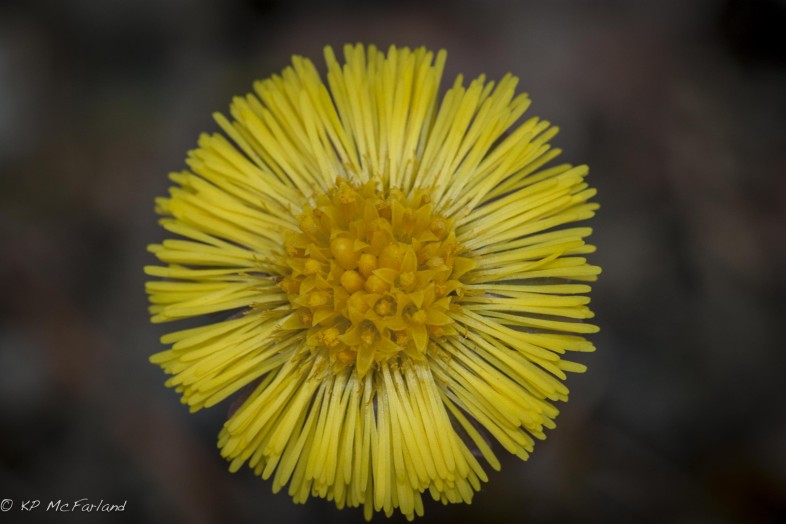
Coltsfoot (Tussilago farfara) blooming along a dirt road. / © K.P. McFarland
One of the first flowers to emerge is Coltsfoot (Tussilago farfara), a species introduced from Europe that can often be found along roadways where the snow first melts away. The name “tussilago” is derived from the Latin tussis, meaning cough, and ago, meaning to cast or to act on, and harkens back to its medicinal uses. But the discovery of toxic pyrrolizidine alkaloids in the plant has resulted in liver health concerns. One of the earliest native species to flower his Hepatica. Sharp-lobed Hepatica (Anemone acutiloba) is an attractive wildflower of the deciduous forest understory. It differs from the closely-related blunt-lobed hepatica (Anemone americana) in having more acutely pointed leaf lobes. Be sure to add your sightings to our database on iNaturalist Vermont.
Sun Basking
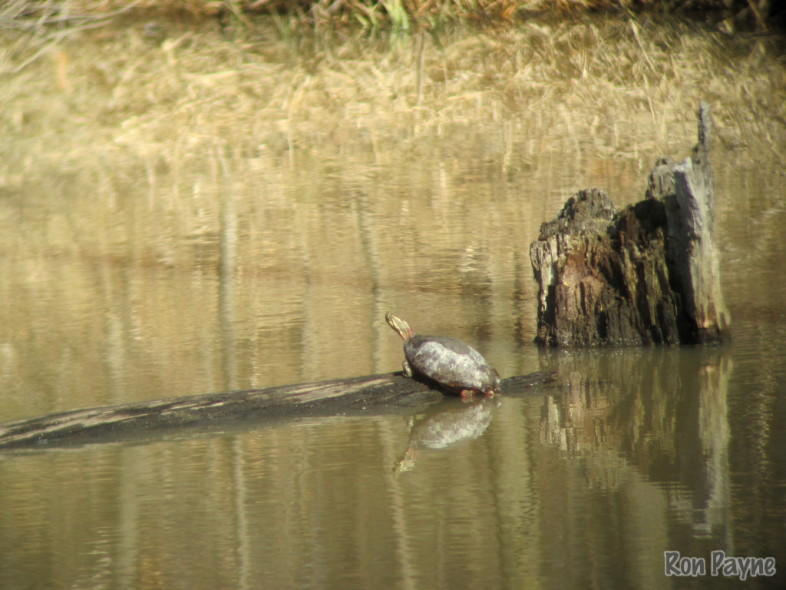
Painted Turtle basking in late March. /© Ron Payne
Under the ice of lakes and ponds the body temperature of the Painted Turtle averaged just 43 °F all winter long. But after ice out, sunny and warm weather brings the Painted Turtles out to bask. To be active, they must maintain an internal body temperature between 63–73 °F. When fighting infection, they can raise their temperature up to 8 °F higher than normal.
The Butterflies of March
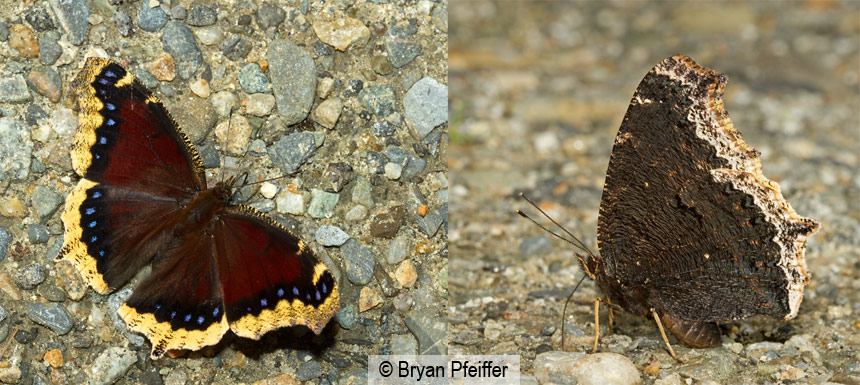
Mourning Cloak (Nymphalis antiopa) – dorsal and ventral / © Bryan Pfeiffer
Whether or not it comes in like a lion, March sometimes heads out like a … butterfly. On sunny days in late March we often see the season’s first butterflies on the wing. But they aren’t newly emerged from a chrysalis; in “butterfly years” they’re ancient. The butterflies of March, at least here in the north, are among the few that over-winter as adults. Mourning Cloak, Milbert’s Tortoiseshell and Eastern Comma are among the species that slip into natural cracks in trees or under the clapboards on homes in the fall, and pass the winter in a state of torpor. When the sun emerges higher in the sky in March, some of these butterflies “feel the warmth” and take flight. Lacking nectar, they’ve got other matters in mind: spring breeding before their lives are over. You can add all of your butterfly sightings to eButterfly.
Waxwings can Hold Their Liquor
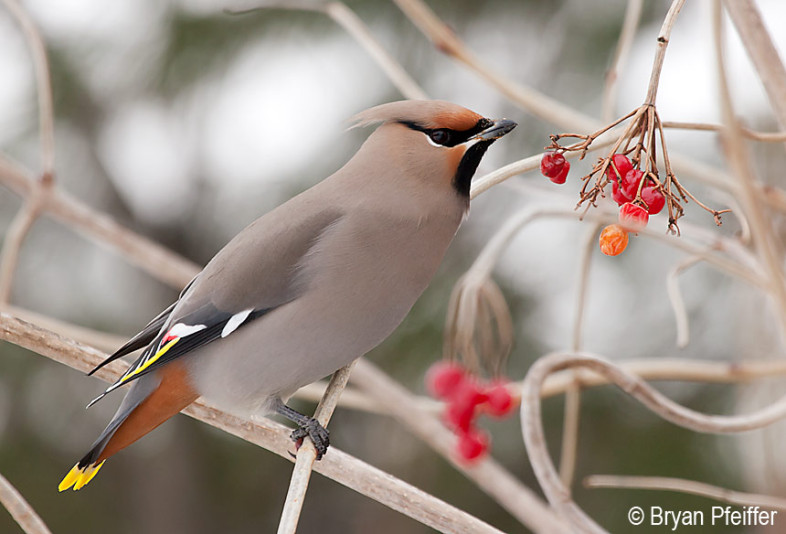
Bohemian Waxwing / © Bryan Pfeiffer
Wonderfully gregarious with supermodel looks, waxwings often visit our towns and cities in February and March to feast on fruit. Cedar Waxwings breed here in the Northeast, but the Bohemian Waxwing raises its young in far northwestern North America. Both of them have a sweet tooth, er, bill.
Waxwings eat a lot of sugary fruit, especially in the winter. Each bird can consume several hundred fruits a day — more than double their own weight — to get sufficient nutrients. Even in March our villages are full of crab apple fruit. Partially dried and frozen, the waxwings seek out these sugary treats. But as the sugary fruit ages, it also ferments.
As the fruit ferments over the winter, ethanol accumulates, with levels peaking in midwinter. Unlike other songbirds, waxwings have unique adaptations for the high sugar and fermented fruit. They are good at metabolizing ethanol. Waxwings often drink water or eat snow in winter, since the sugar in their fruit diet tends to dehydrate the birds through an osmotic effect. In the summer, the fruits are juicier and water is less of a problem. In one study, whole-liver activity of alcohol dehydrogenase, an enzyme involved in metabolism of ethanol, was 23 times higher in Bohemian Waxwings than in European Starlings. Bohemian Waxwings have relatively large livers, which may be important in metabolizing fruit toxins like alcohol. Rarely, they may even become intoxicated, sometimes even fatally.
MARCH MIGRANTS
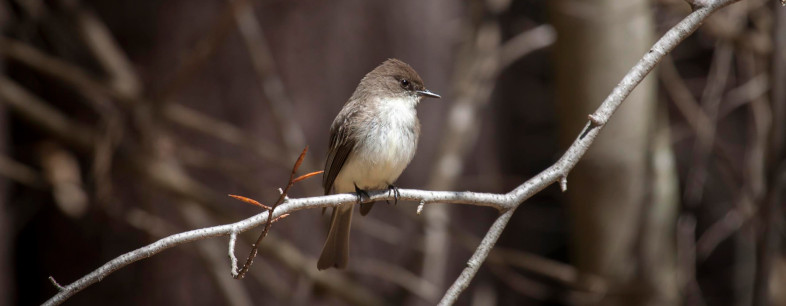 As winter visitors begin to move northward, birds from the south start to arrive. One of the earliest spring migrants, the Eastern Phoebe, returns to northeastern North America around mid-March. The males precede the females and begin immediately to establish their territories and sing their spring song. Nest building begins soon after the female arrives. She builds the nest using mud, grass and moss, often on a building ledge. Sometimes she will renovate an old nest from the prior year.
As winter visitors begin to move northward, birds from the south start to arrive. One of the earliest spring migrants, the Eastern Phoebe, returns to northeastern North America around mid-March. The males precede the females and begin immediately to establish their territories and sing their spring song. Nest building begins soon after the female arrives. She builds the nest using mud, grass and moss, often on a building ledge. Sometimes she will renovate an old nest from the prior year.
Other early songbird migrants are the American Woodcock, Red-winged Blackbird, Common Grackle, Brown-headed Cowbird, and American Robin. We’re now getting reports of our first Song Sparrows returning. Check out the Vermont eBird bar chart for this month to find out what else might be arriving near you this month.
Silver Flowers
Silver Maple (Acer saccharinum) is the first of the maples to bloom in North America, beginning as early as February in the southern part of its range and extending into May in the north. Flowers bloom long before the leaves appear. The flowers on any given tree all open within a few days and the flowering period for any given locality is very short.
Individual trees tend to express their sex in four different manners:
- all male flowers
- mostly male with a few females
- mostly male with a few females and a scattering of hermaphroditic flowers
- all female flowers, but with rudimentary pistils
Because pollen is produced so early in spring, it may be important for bees and other pollen-dependent insects. Most references describe silver maple as wind pollinated, but insect pollination may be important, as many bees visit the flowers. Seeds develop rapidly: within 24 hours of pollination, flower parts wither and ovaries begin to swell.
Add all your flowering observations to iNaturalist Vermont.
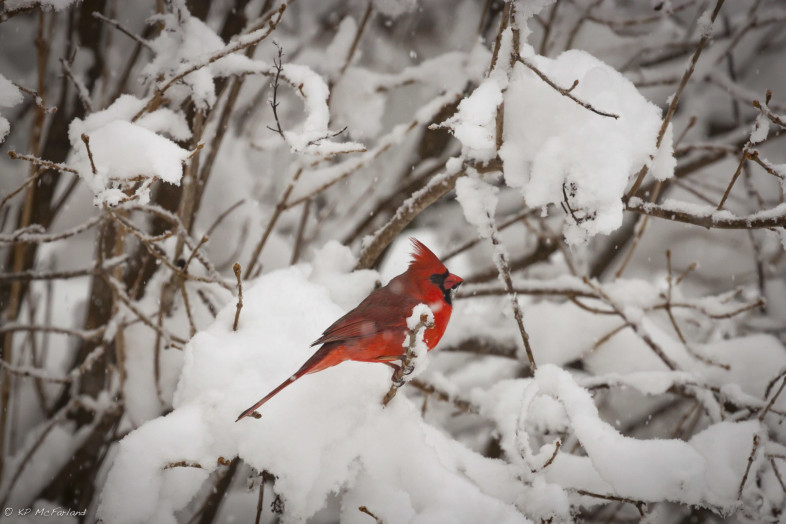
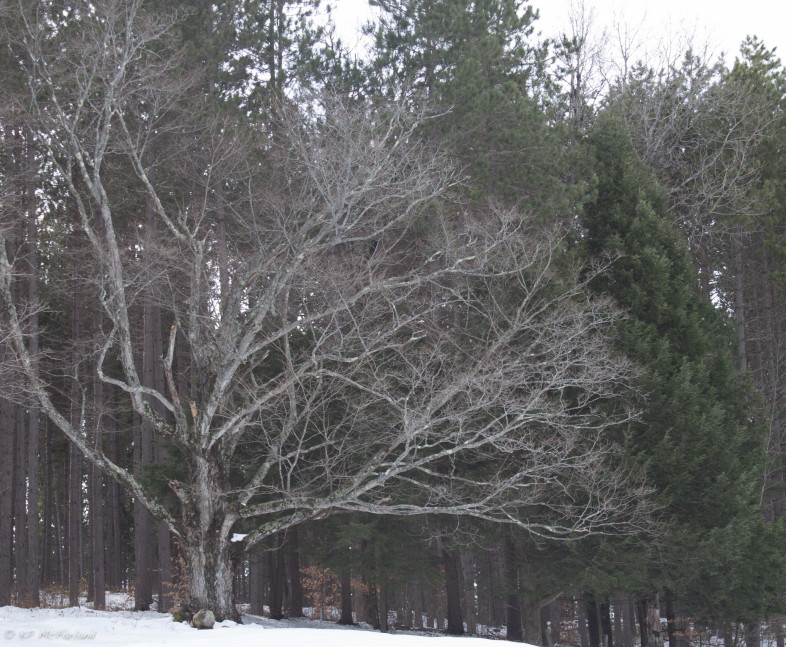
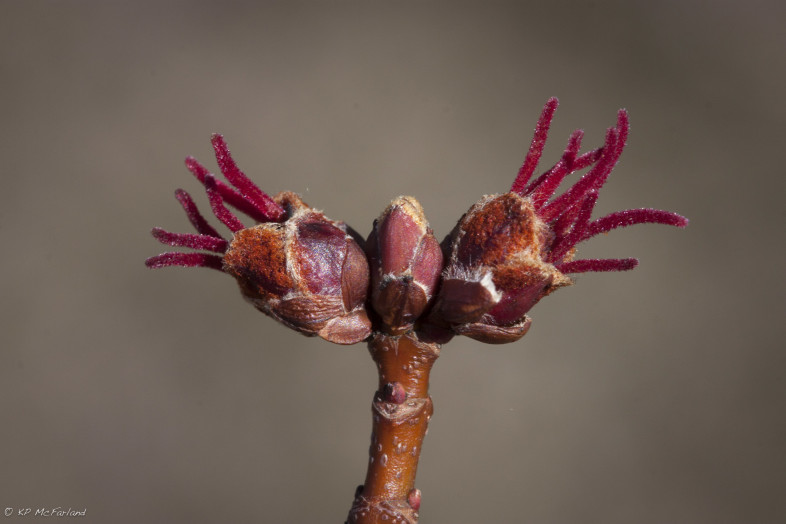

Very nice!